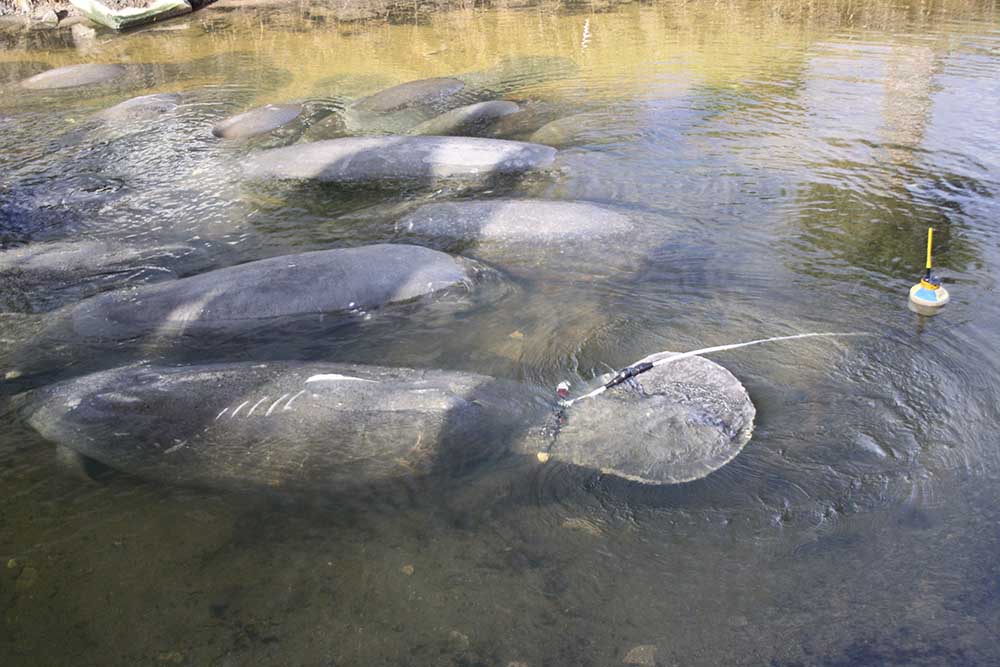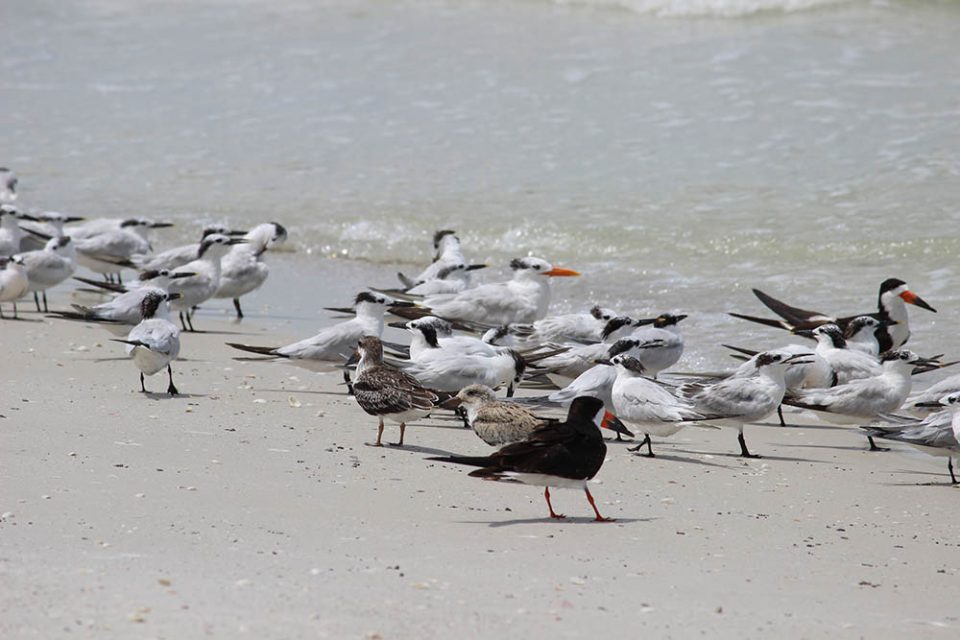
Update on East Coast Manatee Mortality Event
With both cooler air and water temperatures throughout the state in January and February, manatees gathered in large numbers at many warm water sites. The last week of January, FWC staff estimated there were almost 400 manatees in the supplemental feeding trial area of the Temporary Field Response Station in the Indian River Lagoon. Because this trial effort is a management action that has not been attempted before, FWC does not know how much vegetation individual manatees might consume. One of the goals of this action was to reduce manatee mortality. It will not eliminate it. Unfortunately, with the cooler temperatures, FWC Research staff continue to see a rise in the number of manatee carcasses. FWC Research continues to work on manatee carcass recovery operations in coastal waterways. Necropsy teams are investigating manatee health through sampling of select carcasses. The majority of manatee carcasses continue to be in the East Central and Southeast Florida regions. Staff continue to focus on rescuing animals in need of assistance. They are also working with the Manatee Rescue & Rehabilitation Partnership to release rehabilitated manatees into suitable habitat, which will free up room for recently rescued animals at critical care facilities.
Ways you can help manatees:
- Call FWC’s Wildlife Alert toll-free number: 1-888-404-FWCC (1-888-404-3922) or #FWC or *FWC on a cellphone if you see a sick, injured, dead or tagged manatee.
- Boaters will find them easier to spot if they wear polarized sunglasses and keep a lookout for signs of manatees such as the circular “footprints” they trace on the top of the water or their snouts sticking up out the water.
- Look, but don’t touch manatees. Keep your distance when boating, even if you are steering a canoe, kayak or paddleboard. Be a good role model for others so that they learn how to watch and enjoy manatees without disturbing the animals.
- To learn more visit https://myfwc.com/research/manatee/rescue-mortality-response.

Flock of Birds on the Beach? Walk Around, Please.
Let birds rest by walking around a flock! Many shorebirds and seabirds fly hundreds, or even thousands of miles during winter migration and rely on our coasts to rest and restore their energy. When people get too close, it can cause birds to fly and use their important energy reserves. Repeatedly causing them to fly can threaten their survival. Walking around a resting flock helps birds conserve energy and reach their migration destination. Learn more from the Florida Shorebird Alliance. (https://flshorebirdalliance.org/)




